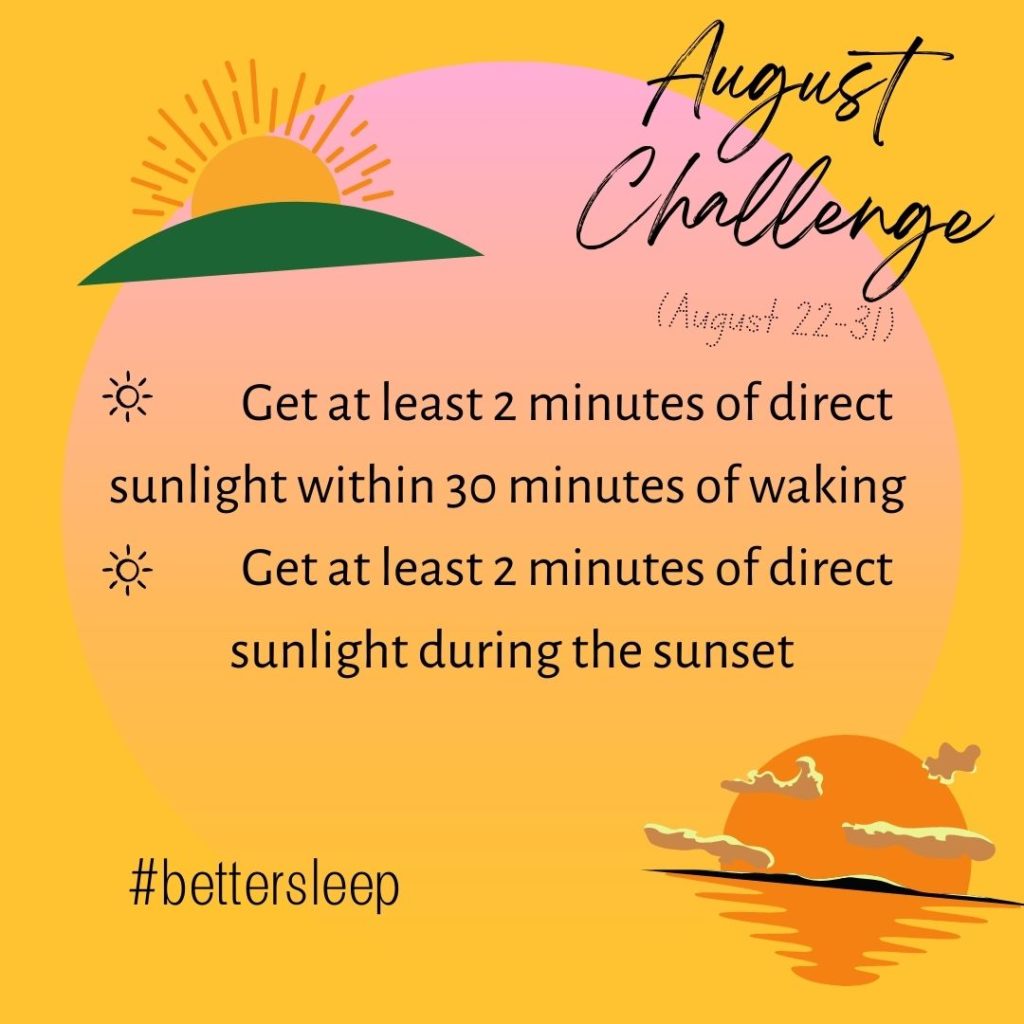What we do in the waking state plays a large role in our ability to sleep soundly during the night. Much of when we fall asleep, how quickly we fall asleep, and whether or not we stay asleep are impacted by our actions (and nonactions) during our waking hours. One of the best and zero-cost tools to improve your sleep that has been hard-wired into our biology for thousands of years is using natural sunlight to improve sleep.
Humans and most animals are non-nocturnal animals, meaning we function best when the sun is out. Using the rhythms of the earth or circadian rhythm, we can use the rise and fall of the sun to enhance our sleep and therefore enhance everything that comes from getting better sleep.
 How do you set your sleep clock? Within 30 minutes of waking up in the morning, go
How do you set your sleep clock? Within 30 minutes of waking up in the morning, go
outside and get 2-10 minutes of natural light. You’ll also do the same in the evening, getting at least 2 minutes of light exposure from the setting sun. The more, the better, but strive for at least 2 minutes. Of course, you don’t have to stare at the sun, just being outside, even if it’s cloudy, will provide the beneficial light from the sun. If sunlight reaches your eyes soon after you wake and before going to sleep, it triggers a neural circuit that controls the timing of the hormones cortisol and melatonin, which greatly affect sleep. According to Science Daily researchers, wavelengths at sunrise and sunset have the biggest impact on the brain centers that regulate our circadian clock, our mood, and our alertness.
Going outside for the light is better than absorbing the light through a window. Catching the rays through glass is 50 times less effective than being outside. For this same reason, you’ll want to ditch the sunglasses. If you’re thinking of turning a lot of lights on in your house or office to help set your sleep clock, it may work to some extent, but for context, sunlight has around 10,000 lux (a unit measuring illuminance) or more, while office light tends to have about 500 lux. You would need six hours of office light exposure to have the same effect as 10–20 minutes of sunlight, says neuroscientist and Stanford professor Andrew Huberman.
Check out this video from Andrew Huberman for more on this topic.
To MAS Health,
Michael